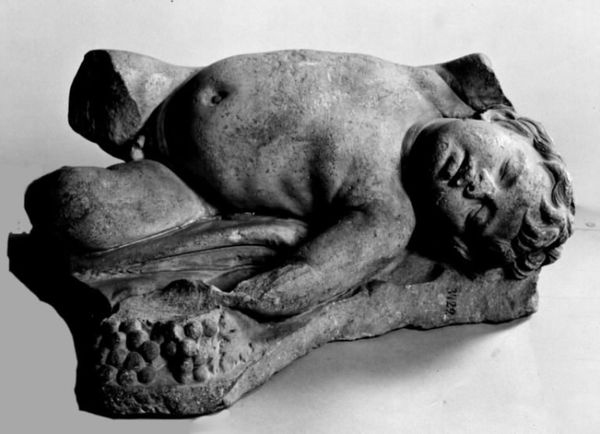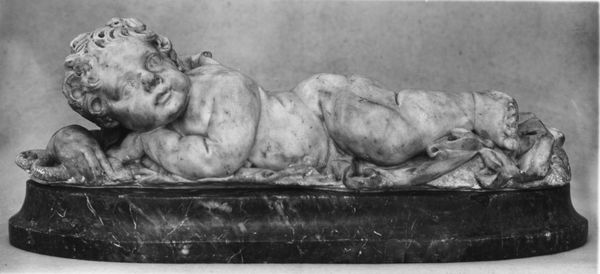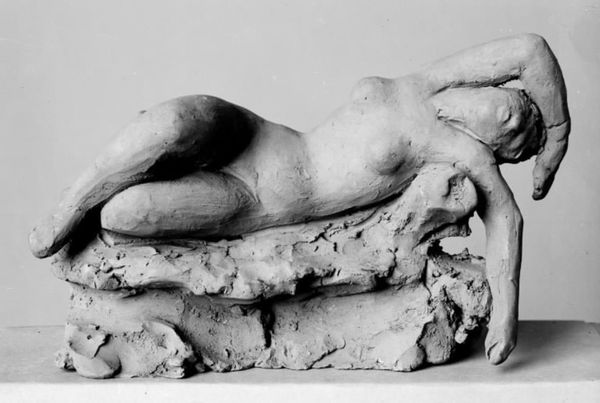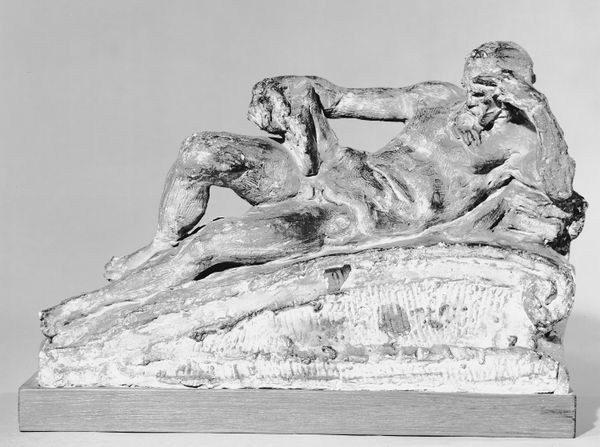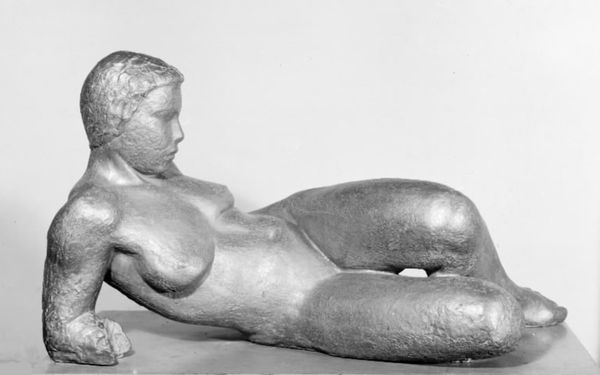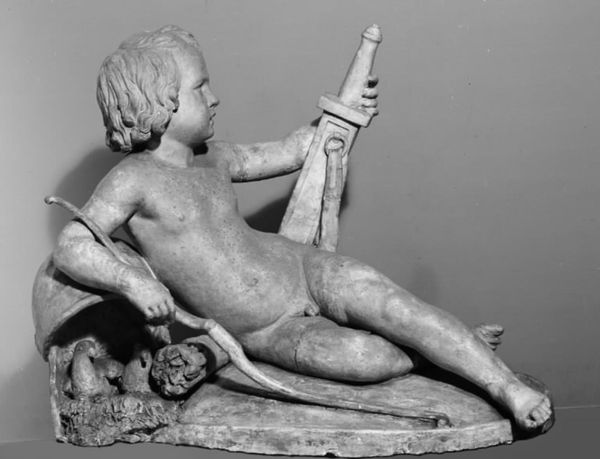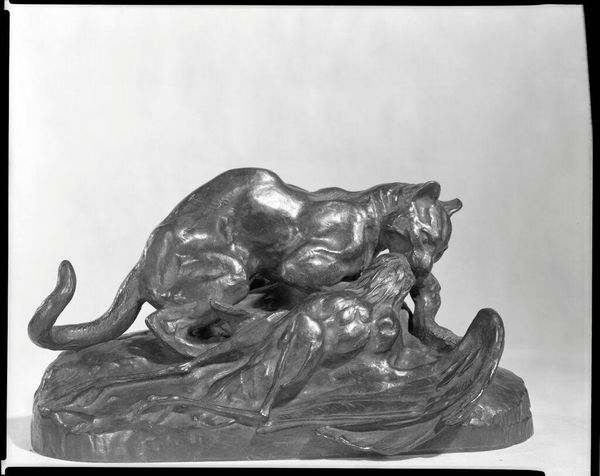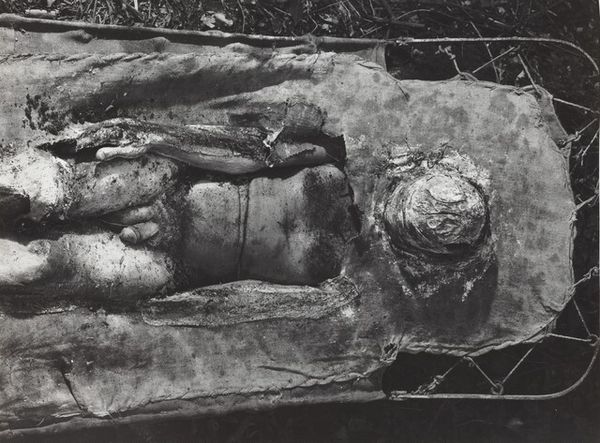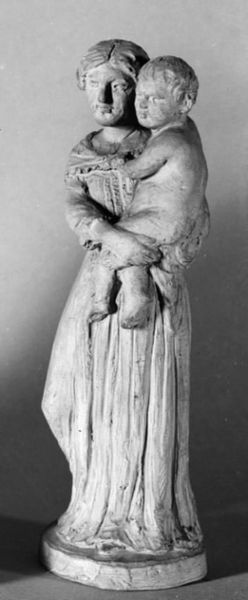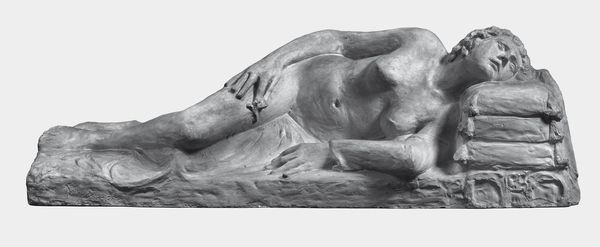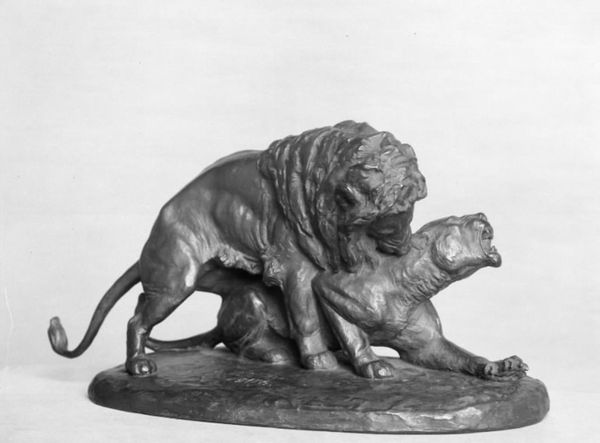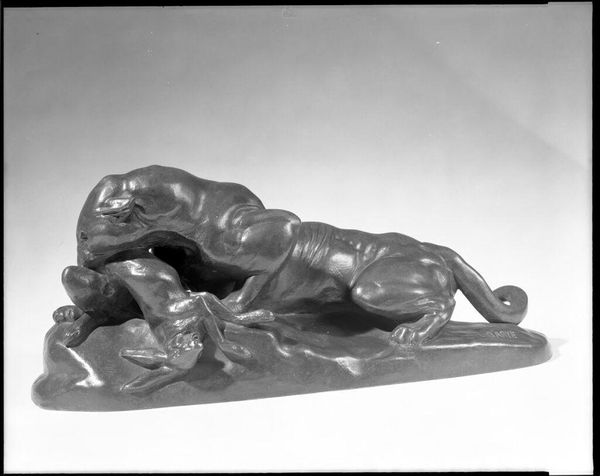
carving, sculpture
#
portrait
#
carving
#
sculpture
#
figuration
#
sculpture
#
genre-painting
#
realism
Dimensions: 7 cm (height) x 17.8 cm (width) x 10.8 cm (depth) (Netto)
Curator: Looking at this sculpture, "Liggende barn, der kæler for en kat"—"Child Lying Down, Cuddling a Cat," created in 1887 by Georg Christian Freund, the most striking thing is the air of vulnerability and comfort emanating from this scene. What's your initial take? Editor: My first impression? Limestone. I mean, beyond the obvious domestic tableau, it's really about the texture, right? You see the tool marks left by the carver, almost celebrating the process of subtraction that brought it into being. Think about the labor and sheer time! Curator: You are absolutely correct about the materiality. But it is hard for me not to wonder about the choice to capture such an unguarded moment of peace between a child and an animal in, as you point out, stone. What do you make of the potential commentary, if any, implicit in transforming an everyday scene into something more permanent and seemingly significant? Editor: Well, permanent maybe isn't the right word. Limestone, being a somewhat soft material, invites erosion, you know? Consider this realism—how does Freund manage to give us both an enduring and fleeting moment in working-class existence through this medium? Does it suggest that our fleeting experiences leave some mark? The constant rub of children petting these animals every day for comfort might wear them down like water over rocks. Curator: It is not lost on me what seems like a rather conventional motif within 19th-century realist sculpture: A child alongside an animal. However, in stark contrast with, say, a confident dog and owner that signify wealth and power, here we see a vulnerable boy with what looks like a similarly scruffy kitten. As you point out, limestone suggests both lastingness and decay. Freund seems more preoccupied with tenderness rather than ostentation. Editor: Yes, and tenderness is a commodity too. Where was it shown? Who bought it? Domestic tranquility wasn’t some universally accessible experience; even representing that scene in limestone carries its own class baggage, don't you think? I wonder about Freund’s position in this. Curator: That's an incisive observation. Considering Freund's own bourgeois background, one might perceive an element of sentimentality or perhaps even an idealization of simple pleasures. It urges one to reflect on the intersection of the artist's vision and the realities of the world that inspired it. It invites empathy while hinting at the complex web of production. Editor: Absolutely. It layers the labor of crafting onto our reflections of work and living conditions within the work! So, next time you look at “Liggende barn, der kœler for en kat,” let's not just see sweetness. Think about the hands that made this, what limestone even *means,* and whose stories are missing. Curator: Beautifully put. For me, this is ultimately a poignant exploration of comfort and how our shared spaces echo throughout time.
Comments
No comments
Be the first to comment and join the conversation on the ultimate creative platform.
